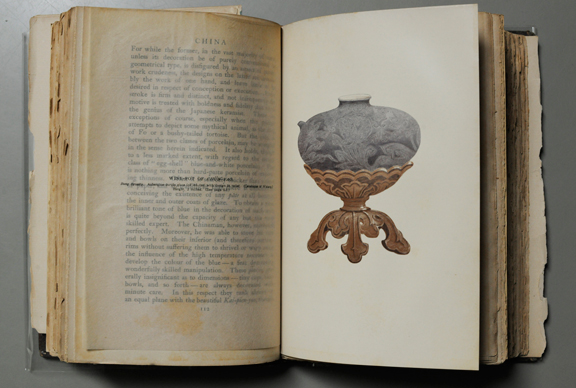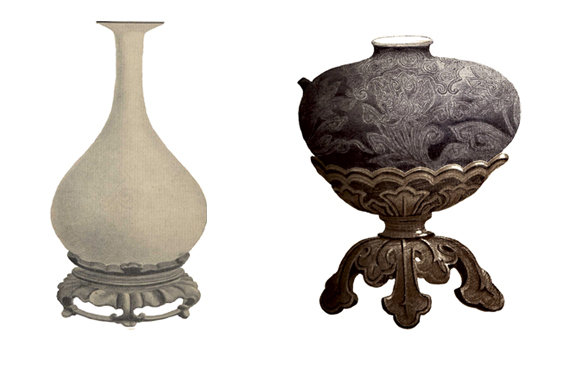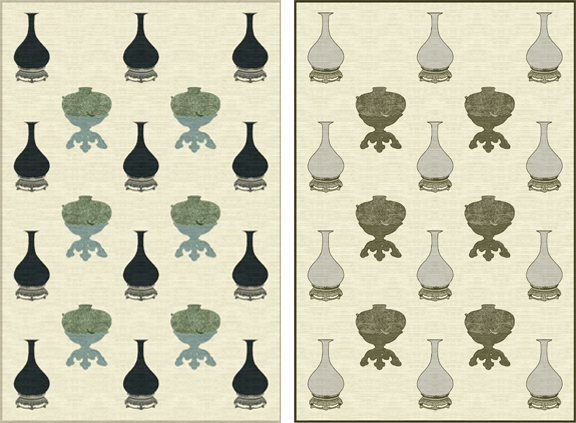A carpet full of vases
The invention of this carpet was whimsical and a bit irreverent, a break from traditional rug designs, but still something chic and historical in its way. Unexpected as the pattern was, our partners were skeptical about its potential. It was really a battle of sorts to get it made.
“Porcelain” took time to develop. Sometimes in the studio, designs will come together quickly and literally, from original sketches or an antique as a model. But oftentimes the most interesting things come a long way from unexpected sources, like vintage books or an isolated gesture from a piece of another period. The idea has to be translated, transferred, stretched, and reshaped into the item that is being created – like a carpet.
The starting point for this carpet was a circa 1902 English book about the history of Chinese porcelains – one of many old art books collected for the studio to use as design inspiration. The illustrated plates in this book were wonderfully detailed and elegant. At the same time, the stark placement of each porcelain on a plain background felt scientific. The quiet colors were almost modern. The goal was to capture not only the exotic charm of the actual porcelains, but also, the vintage ingredient of the book itself.
After experimenting with various images, two porcelain shapes were selected and arranged in an alternating pattern. They were rescaled at a hugely magnified level so that the details of the drawings would be visible. In the process, they also became nearly the true size of real porcelains, which created a nice graphic illusion.
The two colorways for the rug were also taken from the book’s artwork; one borrowing more of the rusted red and ochre tones of a particular vase, the other using slate blue and greener shades with black. Two different warm, buff neutrals were chosen for the rugs’ backgrounds, inspired by the colors of the antique paper and pale vellum overleaf for the engraved plates.
All of these elements go into the work of pattern-making: shape, scale, space, detailing, color, repetition, geometry. Patternwork is central to how I create carpets, fabrics, bedding, dishware, and all kinds of other items with a surface area that could be decorative. The secret is in finding an antique motif that can be pulled in a new direction, to convey a more modern idea. This is a way to see old history with some modernism mixed into it.











